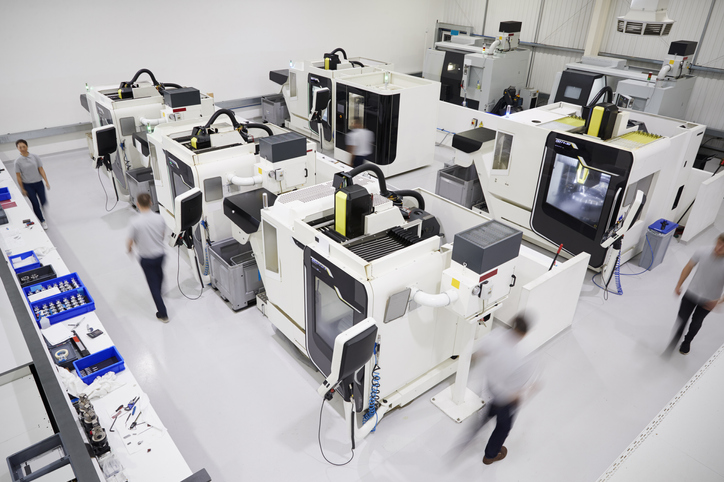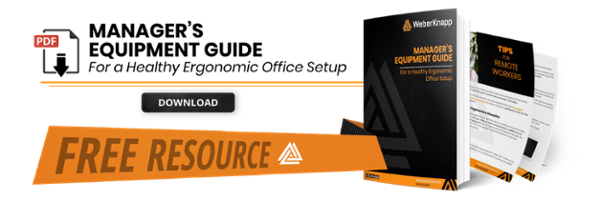
Poor ergonomics in the workplace can lead to costly medical problems such as chronic back pain, carpal tunnel syndrome, repetitive motion injuries, and more. Not only do these conditions cause discomfort and lost work time, but they can also be expensive to treat.
Ergonomic assessment checklists are critical for maintaining a safe, productive manufacturing environment because they help identify and address potential safety issues before they become problems.
There are many opportunities in the manufacturing process to implement ergonomic workspaces, so it's no surprise that the task may seem daunting. That's why we've compiled an ergonomic manufacturing assessment checklist below that will cover basic ergonomic solutions for manufacturing and factory workers.
Ergonomic Assessment Checklist for Manufacturing Safety
Even work environments that were historically considered low-risk for injuries now regularly conduct ergonomic safety assessments. This is because, while serious injuries in the workplace have declined, we've seen an increase in musculoskeletal disorders related to repetitive stress.
These injuries don’t just make life harder for workers; they also significantly affect productivity.
According to the Bureau of Labor Statistics, an estimated 2.6 million private industry workers were treated in an emergency room (ER) following a nonfatal workplace injury or illness in 2023.
Ergonomic assessment checklists are designed to help employers evaluate the physical environment of their workplace, including:
- The design of workstations, tools, and equipment
- How employees use them
- Lighting
- Temperature
By conducting regular ergonomic assessments, employers can proactively identify potential hazards and make necessary changes to reduce the risk of injury and illness.
Risk control services can help businesses create a comprehensive ergonomics program. This includes:
- Assessing current workplace practices
- Providing training for employees on proper body mechanics,
- Creating an ergonomics policy
- Developing an action plan
With all these in mind, let’s look at your manufacturing ergonomics assessment checklist in three parts:
- Ergonomic manufacturing equipment
- Ergonomic standards in the workplace
- Ergonomic manufacturing hazards & how to avoid them
1. Ergonomic Manufacturing Equipment
Many manufacturing facilities use ergonomically designed products to accommodate people of different body shapes and sizes. Particularly of interest are:
-
Monitor arms: These are used on printing equipment, CNC machines, packaging stations, and a wealth of other equipment. Users can adjust the height and angle so they aren’t twisting their bodies or straining their eyes looking up or down.
-
Keyboard and mouse trays: Similar to adjustable monitor arms, keyboard and mouse trays are used throughout the manufacturing industry. Adjustable trays allow people of all shapes and sizes to use the same equipment comfortably.
-
Computers on wheels (COWs): While most common in the medical industry, COWs can also be used by shop supervisors or plant managers to transport their machines from one area to another. They are also great behind the scenes in prototyping and engineering, quality-assurance inspections, and easy access to electronic work instructions at manufacturing stations.
Equipment like the examples above must be adjustable so that no one has to strain to use them. For instance, CNC-like machinery where workers program the output often has its own built-in screens, keyboards, and computer trays. By choosing models with adjustable accessories, your workforce is protected.
While ergonomic manufacturing workstations may differ from job site to job site, ensure that your equipment is adjustable, easy to use, and comfortable for your workers.
See how mechanical motion control can improve your workplace ergonomics:
2. Ergonomic Standards in the Workplace
Ergonomic best practices reduce the risk of strains and repetitive-stress injuries by allowing people to work in natural, comfortable positions. A number of industrial safety and ergonomics standards apply to the equipment you purchase for your facility.
When performing your ergonomic assessment, ensure your equipment and tools comply with the industry and facility standards that apply. This is especially important when manufacturing equipment for the federal government or for defense/aerospace contractors.
Which standards apply will depend on your industry. For instance, SCS indoor air quality standards ensure workers aren’t breathing toxic fumes. Other standards that may apply to your work include:
- Environmental Protection Agency Indoor Air Quality
- Business and Institutional Furniture Manufacturer's Association (BIFMA)
- American National Standards Institute (ANSI). BIFMA operates under the auspices of ANSI, so you will often see their acronyms mentioned together.
- Restriction of Hazardous Substances Directive (ROHS)
3. Ergonomic Manufacturing Hazards & How to Avoid Them
Ergonomic safety tips and training for workers can significantly cut the risk of injury in manufacturing. Brush up on proper form and posture regularly to keep people aware of best practices.
-
Always lift with your legs, not your back.
-
Adjust keyboards, mouse holders, and screens to a comfortable height. Bending or stretching to use computers can lead to repetitive stress injuries.
-
Use lifting aids when lifting, turning, and placing heavy materials.
-
Use transportation devices like carts, forklifts, and conveyors when possible to reduce the need to manually move materials.
Assessing Your Manufacturing Ergonomic Safety
Ergonomic assessment checklists are essential for maintaining a safe and productive manufacturing environment. With the right ergonomics in place, you can reduce the risk of injury or illness while increasing productivity and quality.
By regularly assessing your facility's ergonomics, implementing best practices, and investing in ergonomic equipment such as monitor arms, keyboard trays, COWs, etc., you can ensure your employees work comfortably with minimal risk of strain or pain.
Investing in workplace safety today will pay off many times over by creating a happier workforce that is more likely to remain healthy on the job.
Do You Have an Ergonomics Assessment Checklist?
High-quality ergonomic products are available across every industry, but not all of them make sense for your factory. For more advice on implementing your ergonomics budget, download our free e-guide:
This piece was originally published in October 2021 and was recently updated in November 2025 to reflect industry trends.
.png?width=12000&height=2033&name=WeberKnappLogo_white%20(1).png)


